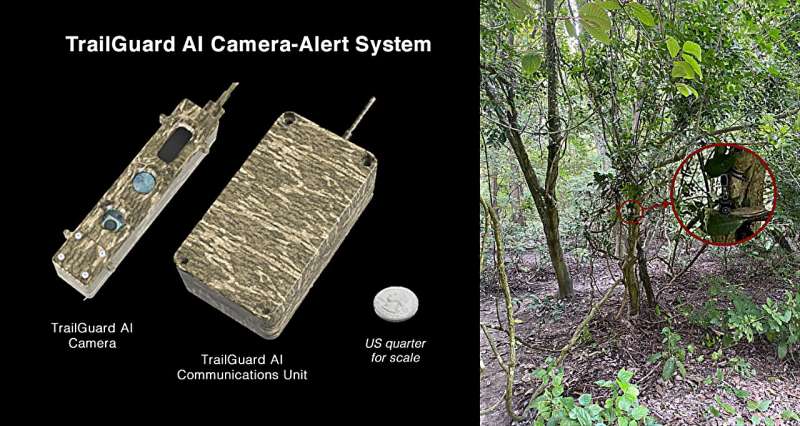
For decades, wildlife biologists have dreamt of a “smart” camera alerting system capable of detecting tigers and other endangered species on the prowl. Legacy camera-trap technology, while valuable for many research applications, has historically been hindered by false positives and an inability to facilitate rapid responses.
Writing in BioScience, Jeremy Dertien of Clemson University and colleagues announce that for the first time ever, wild tigers and elephants have been detected by an artificial intelligence (AI)-powered, cryptic camera-alert system, TrailGuard AI, that transmits images to the cell phones and computers of park managers and other concerned entities in real time.
The technology, originally developed to detect poachers, limits false positives, and its fast alert times permit “park managers the chance for rapid response to intrusion by poachers or to alert villagers to the nearby presence of tigers,” according to the authors. Dertien and colleagues describe the first months of field deployment in India during the monsoon period of 2022, when TrailGuard AI was immediately useful in detecting tigers moving close to villages and using the same trails as wildlife poachers.
Such technology is expected to be a valuable tool in mitigating human–wildlife conflict and furthering conservation efforts, report the authors. However, cautions coauthor Hrishita Negi, “integrating communities is essential for coexistence to work.” Efforts are under way to educate those who may use the system and foster greater uptake of this and other valuable technologies.
More information:
Jeremy S Dertien et al, Mitigating human–wildlife conflict and monitoring endangered tigers using a real-time camera-based alert system, BioScience (2023). DOI: 10.1093/biosci/biad076
Citation:
Researchers reveal novel AI-based camera alert system to promote coexistence between tigers and humans (2023, September 20)
retrieved 21 September 2023
from https://phys.org/news/2023-09-reveal-ai-based-camera-coexistence-tigers.html
This document is subject to copyright. Apart from any fair dealing for the purpose of private study or research, no
part may be reproduced without the written permission. The content is provided for information purposes only.

